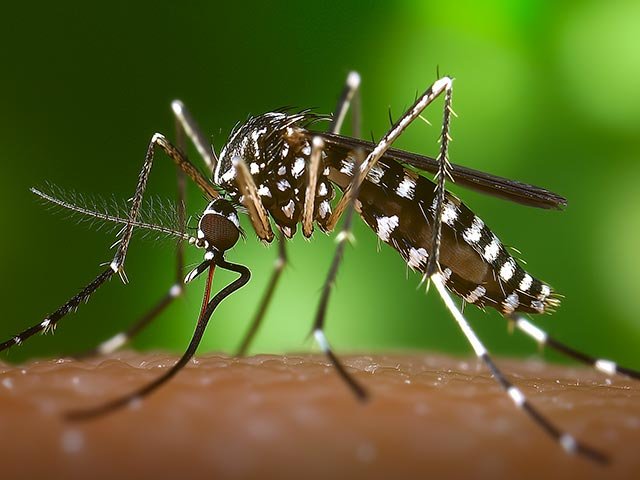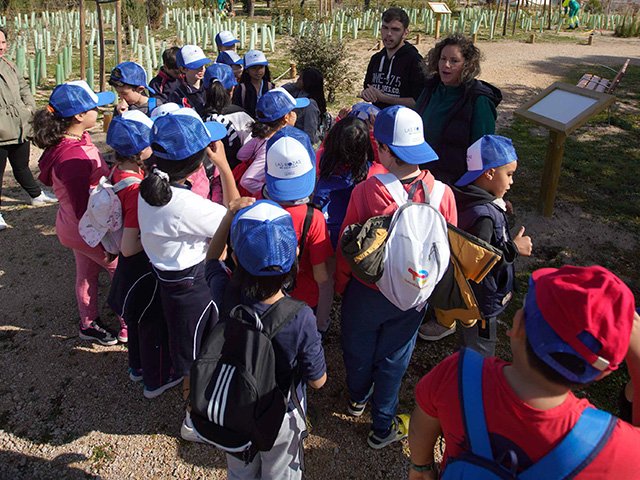Plan de Gestión del Mosquito Tigre en Las Rozas.
- With the aim of minimizing its spread and avoiding the public health and citizen well-being problems generated by its presence
- The collaboration of neighbors to follow the recommendations is essential to curb its proliferation
- Breeds in containers that accumulate stagnant water for more than a week, so we must check them periodically
The Tiger Mosquito Management Plan in Las Rozas emerges in response to the detection of this insect in the municipality in June 2024. The tiger mosquito (Aedes albopictus), originally from Southeast Asia, has spread globally due to multiple factors. Its presence in Spain was confirmed in 2004 and since then has advanced through different regions, reaching the Community of Madrid in 2018. Its rapid proliferation and its ability to transmit diseases such as dengue, zika, or chikungunya make it a species of special sanitary and environmental interest.
Thus, the Health Department, led by Mónica Paraíso, has designed this Plan with the main objective of minimizing the spread of the mosquito in the municipality and avoiding the public health and citizen well-being problems generated by its presence. To achieve this, surveillance, prevention, and control strategies are established.
Entomological surveillance is key in this process, as it allows identifying the affected areas and evaluating the evolution of the species in the municipality. Traps have been placed at various strategic points to detect the presence of eggs and larvae, classifying the areas according to the level of infestation.
Preventive measures include eliminating habitats where mosquitoes can reproduce, such as containers with stagnant water in public and private spaces. In addition, the population is being made aware of the importance of their collaboration, as citizen participation is crucial in the fight against this species. Information campaigns have been designed through the municipal website, social networks, and educational materials aimed at schools and neighborhood associations.
Regarding control measures, when mechanical removal of the breeding grounds is not possible, larvicidal treatments are applied in storm drains, cemeteries, and other areas susceptible to breeding sites. The entire Plan is designed with a temporal planning that ranges from the early months of the year with awareness-raising activities to November with constant surveillance of mosquito activity.
Every year, the effectiveness of the implemented measures is reviewed, and adjustments are made based on the results obtained. Infestation levels, compliance with planned actions, and possible improvements in the control strategy are analyzed. In conclusion, this Plan seeks an integral and coordinated approach between the City Council, the Community of Madrid, and the citizens to mitigate the impact of the tiger mosquito and ensure a healthier environment for everyone.
How to prevent it from breeding in our home?
– Remove stagnant water from containers, such as saucers under pots, buckets, bottles, outdoor ashtrays, toys, or gardening tools. Empty and turn them over to prevent them from refilling with irrigation or rainwater.
– Avoid the accumulation of small amounts of water in outdoor decorative elements such as fountains, garden figures, jars, or wheels.
– Avoid excessive watering that causes puddles and water accumulation in containers and plants.
– Remove and store unused items indoors that could collect rainwater or irrigation water.
– Keep ponds and pools clean and properly chlorinated. Cover them with a tarp when not in use to prevent water accumulation.
– Change the water in vases every 3 or 4 days, including indoor flowers.
– If you have pets at home, clean their drinking bowl every 3 or 4 days.
– Frequently clean and unclog drains, storm drains, and sinks in patios and gardens. Also, clean roof gutters and air conditioning units.
– Avoid excessive vegetation that provides shade and protection for mosquito resting. Keep shrubs pruned.
How to prevent their bites?
– Install fine mesh mosquito nets on doors and windows of the house.
– Ventilate the rooms by creating air currents that repel mosquitoes.
– Use effective repellents. Consult at the pharmacy, especially in the case of children or pregnant women.
– This species of mosquito usually bites outside homes, mainly on the legs due to its low-flight. When going outside, wear clothing that covers the skin as much as possible. Although they can bite through thin clothing such as socks or t-shirts.
What to do if we detect a specimen?
If a specimen is detected in our environment, we should contact the City Council. Through the Pest Management Service, they will advise us on the best option to address the issue. Additionally, you can download the MOSQUITO ALERT application (available for IOS and Android) to participate in a citizen science project. If photos of the found mosquito are sent, they will be identified by experts.
More information about the Tiger Mosquito at the following link.





Publicar comentario